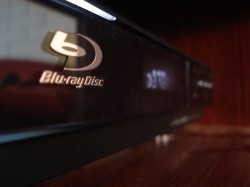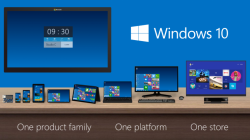Welcome to another WNR. Another fairly short one this week, as the news was thinner than the too-thin aluminium that Apple used for the iPhone 6 Plus, apparently. This WNR doesn’t bend though (might fold, break, snap, but definitely doesn’t bend).
Let’s get going!
![]()
The developers behind DRM-free gaming platform GoG and The Witcher series have once again reiterated their hatred of all things DRM related. If this wasn’t the 28th time they’ve mentioned this, and if I hadn’t already written the same news story eight times, it might have been an interesting news story to write. But at this point I think it’s almost a lie to call this “news” (“olds”?). Slightly less repetitive was the developer’s views on downloadable content. They’re not 100% against it per se, but they do believe that gamers shouldn’t be forced to pay for a DLC that is only “one-thousandth of the whole game”. Take note EA!
![]()

Blu-ray players are not as popular as game consoles for streaming Netflix. Not as responsive or as easy to use?
New research shows that nearly half of U.S. broadband households are using their game console as their main connected CE device, with many consuming more than 10 hours of non-gaming content each week on these devices. I guess I would fall into the more atypical household where I *only* use my game console for non gaming related tasks (more than 20 hours per week), since after a hard day’s work, I just don’t have the energy to even think about playing games (watching Netflix in a semi-vegetative state, however …).
Interestingly (or not), the survey of 10,000 U.S. households found that the Xbox platform was still more popular than PlayStation – 35% compared to 27%. The Wii was up there too with 35%. Blu-ray players, on the other hand, are not being used as much as game consoles, with only 9% of households using these as their primary device. Smart TV lags behind game consoles as well. I think the poor responsiveness, lack of app updates on Smart TVs and Blu-ray player for app such as Netflix is why these devices aren’t being used more – a missed opportunity by the CE manufacturers, if there ever was one. Smart TVs, in particular, have been largely a disappointment, considering how much easier it should be to just turn on the TV, press a button to access Netflix, as opposed to using a game console that often doesn’t even have a dedicated remote control. A lack of a common app platform on TVs and Blu-ray players, which makes making/updating apps for each and every device a time consuming exercise, is probably why the equivalent apps on these devices are so poor in quality, performance and features compared to say the PS3’s Netflix app (that and the low capability processors found in these devices, compared to the powerhouse that is a game console).
Coincidentally, another study was released this week suggesting that game console Netflix usage is actually down, compared to standalone media players and smart TVs. The survey says that 28% of users now use devices like the Roku and Chromecast for their Netflix streaming needs in the living room, which is double what is was in 2013. Smart TVs usage is at 28% as well (up from 20%), leaving video console usage, while still top, at the reduced usage of 43%.

The ‘Crouching Tiger’ sequel will be available on Netflix and in the cinemas at the same time … cinema chains are not pleased
No matter which device you watch it on, one movie that many of these households will definitely be watching via Netflix next year will be the sequel to the Oscar winning ‘Crouching Tiger, Hidden Dragon’, which will air exclusively on Netflix at the same time as the movie’s theatrical/IMAX debut. The reason for the Netflix exclusivity is because Netflix are one of the producers of the film – a Netflix original movie, if you will. This might just be the highest profile movie to have SVOD release window coincide with its theatrical run, and it hasn’t gone unnoticed by U.S. cinema chains, most of which (Regal, Cinemark and AMC) have vowed to not screen the film in their theaters.
The chains have simply dismissed the movie as a “made for video” one, and they have cited this as the main reason why they won’t air it. But based on history, we know cinemas are notoriously sensitive to their exclusivity window, and are willing to do everything to protect it, including boycotting a potentially popular film. Even when all powerful Hollywood studios attempted to shorten the exclusivity window by a couple of weeks in order to bring forward the digital/disc release window and to fight piracy, the chains retaliated quite swiftly (even though the last few week bring in very few cinema patrons) and Hollywood eventually backed down. So Netflix’s recent move, which also includes signing up Adam Sandler on a four film deal, is sure to keep theater execs up at night, even if they don’t want to admit it.
Personally, I’m looking forward to Crouching Tiger Part II. Not so much the Adam Sandler films. Let’s hope they’re more ‘The Wedding Singer’ and ‘Punch-Drunk Love’ than almost every other film (although I liked ‘Click’ and ’50 First Dates’).
Chances are, the films that Netflix will be producing will also be made available in 4K to help Netflix promotes its nascent 4K service. So it’s good news that the licensing terms for Netflix’s choice of 4K codec, HEVC, has been announced and it’s actually better than the one for the current industry standard H.264. The MPEG LA has decided against charging any fees for the codec’s use on videos streamed over the Internet or sold on Blu-ray disc, which will surely help HEVC gain further industry acceptance. Products that can encode or decode HEVC will be charged at a rate of 20 cents per product, with the first 100,000 units per year free of charge. Yeah, you know it’s a slow news week when licensing terms and fees become a subject of discourse.
![]()
Not that much happening in gaming (or anything else, really), except the somewhat surprising announcement of Windows 10 (skipping Windows 9 entirely … perhaps it was considered too confusing due to existence of Windows 95/98 (hopefully not on any actual in-use computers) and what it will mean for gaming on the Xbox platform. The unified approach, which didn’t really work with Windows 8 (okay for tablets, horrible for desktops), will be kicked up a notch by trying to unify not only desktops and laptops with smartphones and tablets, but also the Xbox One game console as well. Games made for Windows 10 could be made to be compatible across every Windows device, from 4″ phones all the way to 80″ TVs connected to the Xbox One.
I seriously doubt we’ll see “proper” Xbox One games also being playable on Windows PCs, due to the huge differences in architecture and differences in optimisation techniques between Xbox One and Windows games. So it will be more things like apps or perhaps even MMOs, that will have universal Windows support. At the very least, it’s something Microsoft can say they have that Sony cannot really compete, since Sony don’t make their own smartphone/tablet and computing OS. Sony can adopt Android as their own though, and port support for certain Android apps to the PS4.
——
And that’s all we have this week. See you next time!


